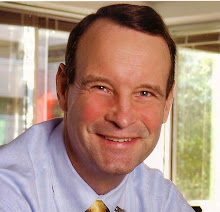SITTING, AND HOW IT IMPACTS YOUR GOLF SWING
Bob Forman
Certified Golf Fitness Instructor
If you tend to be sedentary and sit for a good part of the day, you’re developing imbalances in the body that will not bode well for your golf game. The problem is that most people don’t stop to think just how much they do sit during a typical day at work, in the car, or at home, and therefore don’t realize how it’s affecting their health or golf performance.
The anatomy of a sitter goes like this. When you sit, you place the muscles in the front part of the hip, known as the hip flexors, and the ones in the back of the thigh, the hamstrings, in a shortened position. While this shortening is occurring, there is a concomitant lengthening and weakening of the opposing muscle groups. Affected are your glutes, or buttocks, opposite the hip flexors, and the quadriceps muscles in the front of your thigh, opposing the hamstrings.
The hip flexors and hamstrings can play a significant role in your golf posture and in the mobility of the hip. Tight hip flexors, for example, often times contribute to an S-posture or a swaying of the lower back while at address over the ball. This can very easily lead up to acute and chronic low back discomfort and pain, and appears to be more common in women.
Similarly, tight hamstrings are one of the bigger factors that lead up to low back problems in general, never mind golf. Combine this muscle deficiency, however, with the explosiveness of the golf swing and you set the stage for back injury.
Individually, or in combination, tight hip flexors and hamstrings can also limit the range of motion required both for front-to-back and side-to-side, rotational movements of the hip. This can detract from the efficiency of the golf swing and result in swing faults and/or loss of power and distance.
Weakening of the glutes or quadriceps can impact the stability and control of the lower body and decrease the amount of power that you might be able to produce while swinging the golf club. The glutes supply power in any swinging skill (i.e. golf, tennis, baseball). They also play a role in the ability to control the lateral movement of the hips during the swing, reducing the potential for sway in the backswing and slide in the downswing.
Another common occurrence in amateurs is the inability to maintain the bend in the trail leg while bringing the club back. This straightening of the back leg during the backswing, which among other things is a precursor for over rotation of the hips, can be linked to a lack of strength in the quadriceps muscles.
A good golf fitness program should identify these muscle deficiencies and imbalances, and then work to correct them. A brief interview with the golfer will establish lifestyle habits and the degree of daily activity, which should be considered when developing the exercise intervention. A physical assessment is an absolute must in order to identify and determine the extent of the weakness and/or tightness, and help to determine which particular type of exercise is necessary. Without this information, the golfer may be only making matters worse by strengthening an already tight muscle group, as an example, thereby enhancing the deficiency.
Sitting for a good part of the day can not only have deleterious effects on your physical health, it can wreak havoc on your golf swing. The often times undetected muscle imbalances that develop from sitting can be the underlying cause for poor golf performance and physical discomfort.
Sunday, January 11, 2009
Subscribe to:
Post Comments (Atom)



No comments:
Post a Comment